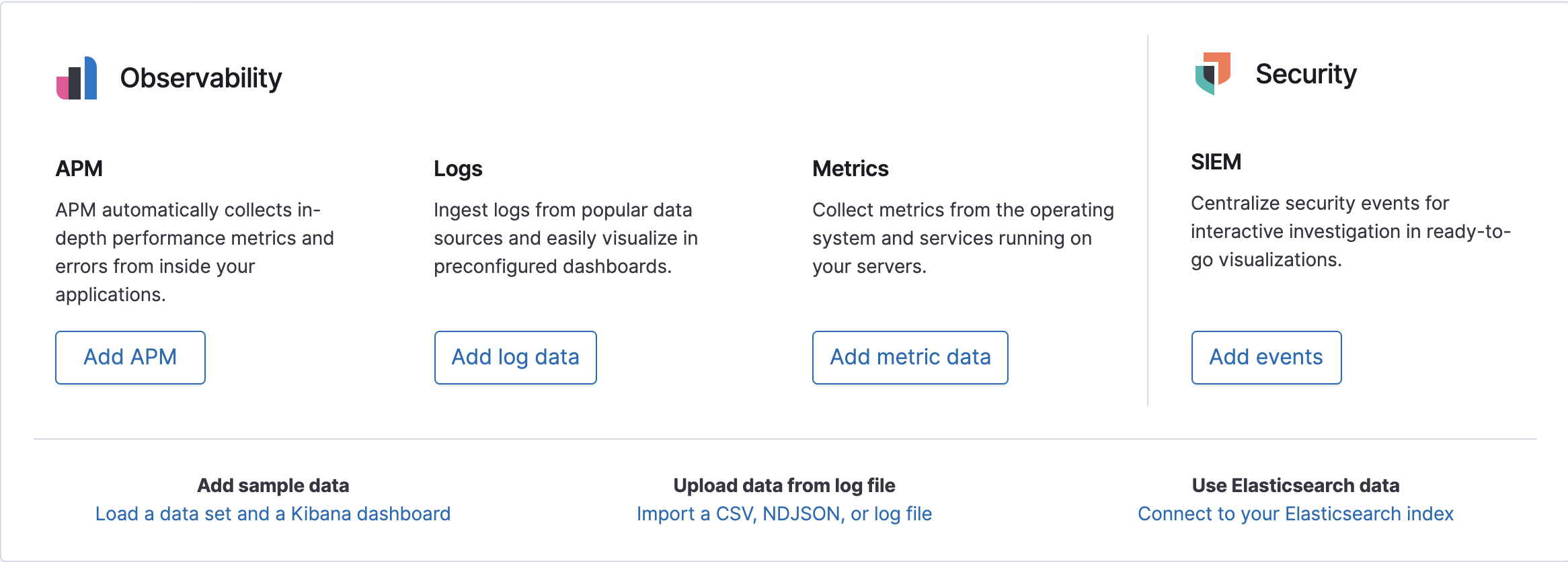IMPORTANT: No additional bug fixes or documentation updates will be released for this version.
Get up and running
editGet up and runningedit
To use the SIEM app, you need an Elasticsearch cluster and Kibana (version 7.2 or later) with a basic license. See Getting started with the Elastic Stack.
There are some additional requirements for using the Detections feature. For more information, see Detections configuration and index privilege prerequisites.
You can skip installing Elasticsearch and Kibana by using our hosted Elasticsearch Service on Elastic Cloud. The Elasticsearch Service is available on both AWS and GCP. Try the Elasticsearch Service for free.
For information on how to perform cross-cluster searches on SIEM indices, see:
- Search across cluster (for on-premises Elastic Stack deployments)
- Enable cross-cluster search (for hosted deployments)
Ingest dataedit
To ingest data, you can use:
- Beats shippers (version 7.x or later) installed for each system you want to monitor.
- Elastic Endpoint Security, which ships events and security alerts directly to Elasticsearch.
- Third-party collectors configured to ship ECS-compliant data. SIEM field reference guide provides a list of all fields used in SIEM.
If you use a third-party collector to ship data to the SIEM app, you must
map its fields to the Elastic Common Schema (ECS). Additionally,
you must add its index to the SIEM Elasticsearch indices (Kibana →
Management → Advanced Settings → siem:defaultIndex).
SIEM uses the host.name ECS field as the
primary key for identifying hosts.
Install Beats shippersedit
To populate the SIEM app with hosts and network security events, you need to install and configure Beats on the systems from which you want to ingest security events:
- Filebeat for forwarding and centralizing logs and files
- Auditbeat for collecting security events
- Winlogbeat for centralizing Windows event logs
- Packetbeat for analyzing network activity
You can install Beats using a Kibana-based guide or directly from the command line.
Install Beats using the Kibana-based guideedit
Follow the instructions in the Add Data section of the Kibana home page. Click Add events, and follow the links for the types of data you want to collect.

Download and install Beats from the command lineedit
If your data source isn’t in the list, or you want to install Beats the old fashioned way:
- Filebeat and Filebeat modules. See the Filebeat modules quick start and enable modules for the events you want to collect. If there is no module for the events you want to collect, see the Filebeat getting started to learn how to configure inputs.
- Auditbeat. See Auditbeat getting started.
- Winlogbeat. See Winlogbeat getting started.
- Packetbeat. See Packetbeat getting started.
Enable modules and configuration optionsedit
No matter how you installed Beats, you need to enable modules in Auditbeat and Filebeat to populate the SIEM app with data.
To populate Hosts data, enable these Auditbeat modules:
To populate Network data, enable the relevant Packetbeat protocols and Filebeat modules: